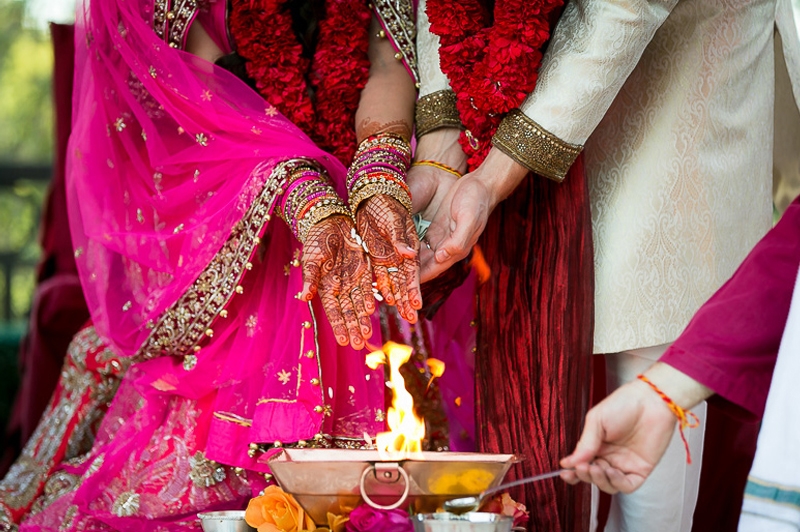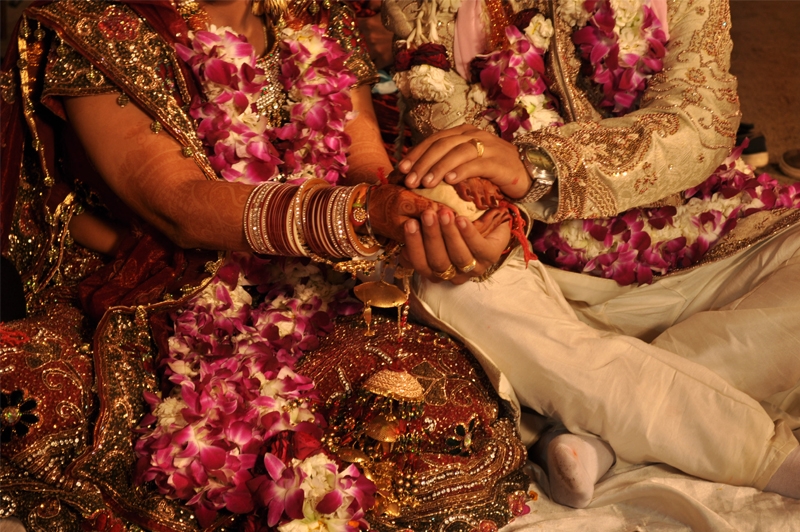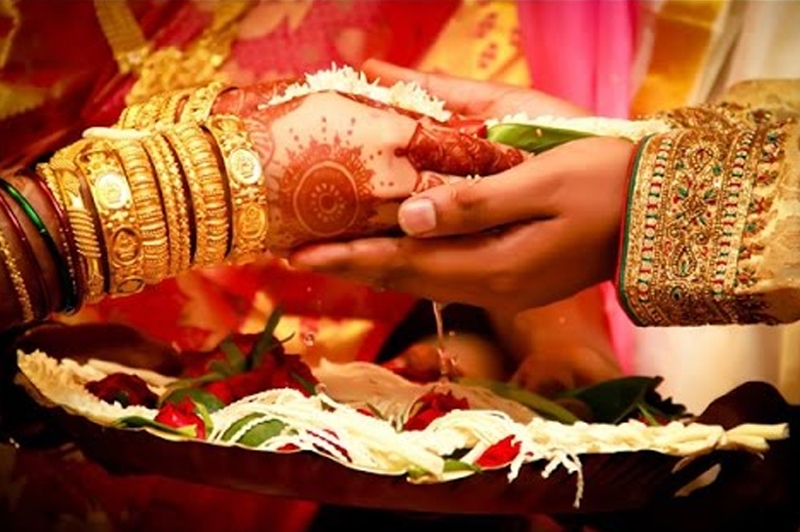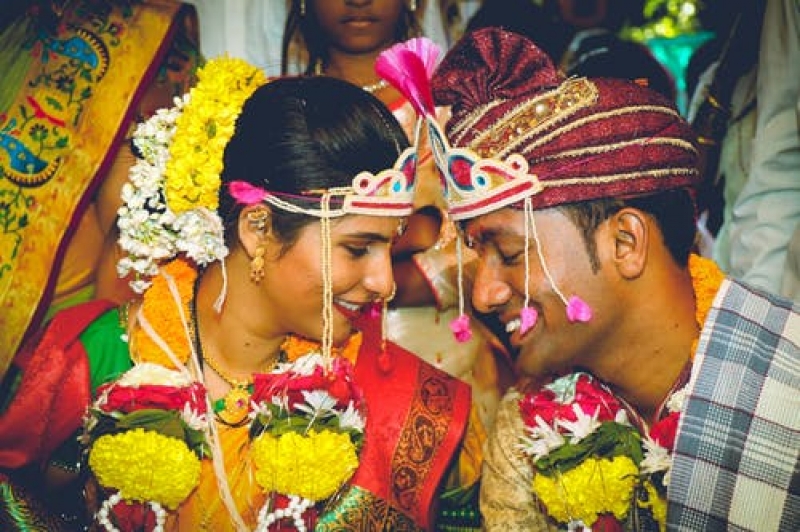
Home > Blogs > West Indian Wedding Traditions

An Indian wedding involves a lot of fun, frolic, celebrations, rituals and holy ceremonies. Indian wedding traditions are gaining popularity across the length and breadth of the world. In fact, many foreigners seek to get married in India by indulging in Indian wedding traditions. Owing to India's rich cultural diversity, wedding traditions differ slightly according to the region. The West Indian wedding traditions mainly include the traditions of Maharashtrian, Gujarati and Marwari weddings.
The Maharashtrian wedding ceremony exhibits wonderful magnificence. Usually, marriages among the Maharashtrians take place in the morning. An auspicious time or Muhurat is chosen, which is known as the Goraj Muhurat. During the ceremony at the time of Shubh Muhurat, the girl's maternal uncle escorts her to the Mandap. The girl and boy are not allowed to see each other for some time. Then the shlokas are chanted and this is followed by the removal of Antarpaat. People shower Akshata (unbroken rice) on the couple. The garlands are then exchanged between the bride and groom and the couple takes Saat Pheras or Mangal Pheras in front of the holy fire.
After the marriage ceremony, Laxmi Narayan puja is conducted, in which the bride and groom are worshipped as Goddess Lakshmi and Lord Narayan. The girl's hand is formally given to the groom in the ceremony known as Jhal Phirawne or Kanya Daan. There has been a custom among the Maharashtrians to change the name of the girl after marriage. This ceremony, if held is usually performed the groom's house. The reception party is hosted on the night of marriage, for which a special feast is prepared.
Gujarati wedding ceremonies begin with offering prayers to Lord Ganesha and seeking his blessings. Like any other traditional Indian wedding, Mehndi and Sangeet ceremonies follow it. Jaimala or flower garlands are exchanged between the bride and the groom twice. First time, the groom is on a higher platform than the bride, while, the second time, they are at an equal level. In the Madhuparka ceremony, the groom's feet are washed and he is given honey and milk to drink. While the ceremony is on, the bride's sisters attempt to steal the groom's shoes, known as 'Juta Churai'. The groom who seeks to have his shoes back handsomely rewards them for this later.
One of the most important wedding rituals is Kanya Daan in which the bride's father washes the groom's feet and gives his daughter's hand to him hoping that he will take good care of her. The bride is considered to be a form of Goddess Laxmi and the bridegroom is considered to be Lord Narayan. Hasta Milap ceremony involves the tying of the groom's shawl to the bride's sari. The tying of knot and the joined hands of the couple are emblematic of the meeting of the two hearts and souls. The family and relatives sprinkle rose petals and rice grains on them.
Pheras come next and are rounds that the couple takes around the sacred fire, as the priest chants mantras. Saptapadi are the seven steps that the married couple walks together and takes seven vows. Then, the couple seeks the blessings of their parents and other elders. This marks the conclusion of the wedding ceremony and is followed by a reception party. In the Vidaai ceremony, the bride bids farewell to her parents, friends and relatives and both of them part moving towards their home, with a new life awaiting them.
During the Marwari Wedding Ceremony, the Baraat has only male members. The Rajput groom generally wears a gold achkan and churidar or jodhpurs with an orange turban. The groom's marriage procession is conducted royally. There is no street dancing by the Baraatis. Everyone including the bridegroom rides an elephant or a horse and also carries swords in their hands symbolic of valor.
When the marriage procession of the groom arrives at the bride's home, the ladies take the bridegroom inside. His mother-in-law gives him a warm welcome by performing the traditional Aarti.
During the wedding ceremony the groom is escorted to the Mandap and is usually accompanied by only one married male relative and his younger brother or a younger male cousin. The bride generally has to cover her face with a long veil. The female members of the house mainly attend the wedding ceremony.
In the Bidaai ceremony, the bride bids adieu to her family, friends and close relatives. At the time of Bidaai, a coconut is kept under the wheel of the car. When the newly weds reach their house, the bride is received by the groom's family. This custom is known as Griha Pravesh

Hindu weddings are ceremonial feasts laden with symbolic rites and rituals. Despite India's diversities in language, culture, food and lifestyle, one can observe common threads in many Hindu weddings across Read More...

Indian Weddings with all their grandeur and magnificence have cast its spell on so many foreigners that there are many who consider getting married in India. Consequently wedding tourism in Read More...

The Hindu wedding ceremony has a number of rituals and customs, each symbolic of beautiful and noble sentiments. South Indian wedding traditions and ceremonies are no exception. As one enters Read More...
Search by Language : Bihari | Bengali | Hindi | Gujarati | Kannada | Malayalam | Marathi | Oriya | Punjabi | Rajasthani
Search by Religion : Hinduism | Islam | Christianity | Sikhism | Buddhism | Jainism | Others
Search by Community : Agarwal | Baniya | Khatri | Brahmin | Shia | Sunni | Rajput | Intercaste | Kshatriya | Parsi
